Vogue is one of the best fashion publications in the world and many well-known fashion professionals have worked there. Diana Vreeland, Grace Mirabella, Anna Wintour, Franca Sozanni, Alexandra Shulman, Edward Enninful, Carine Roitfeld…these Vogue editors’ legacy is profound. With their discerning eye for design, creativity, and passion for the industry, they have been instrumental in transforming Vogue into a top fashion publication across the world and marking the history of fashion. Their visionary leadership, insightful editorials, and ability to anticipate fashion’s evolution have made them true legends within the realm of fashion journalism.
Let’s discover in this article how 7 famous editors transformed Vogue in the U.S, U.K, France and Italy.
7 Famous Editors Of Vogue
As we explore the accomplishments of these iconic famous editors of Vogue, we will gain insight into their groundbreaking editorial choices, their unmatched ability to recognize talent, and their relentless pursuit of excellence. From shaping the careers of legendary fashion photographers and designers to pushing boundaries with groundbreaking themes and concepts, these editors have continually pushed Vogue beyond the conventional and into uncharted territory.
Join us on this captivating exploration as we pay homage to the trailblazers who transformed Vogue into a cultural phenomenon, forever altering the landscape of fashion journalism. Through their unparalleled vision, unyielding dedication, and relentless pursuit of fashion’s cutting edge, these legendary Vogue editors have left an indelible legacy that continues to shape the fashion world to this day.
Vogue’s First Editor-in-Chief
Vogue’s first editor was Josephine Redding, who led the magazine from 1892 (the year it was launched) until 1901. Josephine Redding holds a significant place in the history of fashion journalism. Taking the helm of the magazine in its formative years, Redding played a crucial role in establishing the publication’s identity and influence. With a keen eye for style and a deep understanding of the evolving fashion landscape, she curated content that resonated with readers and showcased the latest trends and designs of the time. Redding’s editorial prowess laid the foundation for Vogue’s future success, setting a standard of excellence that would be carried forward by generations of editors to come. Her pioneering spirit and dedication to capturing the essence of fashion made her an influential figure in the early days of Vogue, leaving an enduring legacy that still reverberates within the industry today.
Since then, the magazine has had many editors across different international editions whose names became well-known in the fashion industry and beyond. Diana Vreeland, Grace Mirabella, Anna Wintour, Franca Sozanni, Alexandra Shulman, Edward Enninful, Carine Roitfeld…these editors-in-chief are among the most famous ones in the history of Vogue so today’s article is dedicated to them.
Diana Vreeland

Diana Vreeland is for sure one of the most recognized and famous editors of Vogue. She joined Vogue from Harper’s Bazaar, where she worked as a columnist from 1934 to 1957. In December 1962, she became editor-in-chief of Vogue and remained until 1971. During her relatively short tenure at the magazine, compared to her successors Grace Mirabella and Anna Wintour who we are going to talk about below, she is credited for making an impact on the American fashion editorial scene during the mid-20th century.
Vogue under Vreeland reflected the “extravagance, and luxury and excess” of the 60s, according to Vanity Fair. She was a very creative and one-of-a-kind editor who often made choices of editorial content that were considered extreme but somehow managed to bring success. “In particular, she created the notion of the “Beautiful People,” a subclass of youthful, wealthy, and footloose members of the less-exclusive international set who were supposed to set the tone of fashion, art, and society.” Diana Vreeland worked with models like Twiggy, Veruschka, Tree, Anjelica Huston, Marisa Berenson, and Edie Sedgwick who redefined the era’s standard of attractiveness.
It is said that Diana Vreeland was a difficult person to work with.
But at the same time, people respected her and admired her taste and bold editorial choices. “There was never any fashion at Vogue until Diana Vreeland arrived,” said Kay Hays to Vanity Fair, who worked as shoe editor under Vreeland and other famous editors of American Vogue. “It was very difficult to work for her,” Grace Mirabella also said. “But you can get along with someone who is difficult if you admire them. And I admired Diana Vreeland—for all of her style and know-how, which she was about.”
In 1971, Diana Vreeland was removed from Vogue and got replaced by Grace Mirabella.
There are many resources about Diana Vreeland. But you can read her book Diana Vreeland Memos: The Vogue Years, and watch the documentary Diana Vreeland: The Eye Has to Travel if you want to learn more about her life and career.
Grace Mirabella

Grace Mirabella started working at Vogue in 1951 as an assistant to Diana Vreeland. She got promoted to editor-in-chief between 1971 and 1988.
Her appointment came as a surprise to many as she didn’t have a background in fashion or journalism. She majored in economics and worked as an executive at Macy’s. As well as at the publicity department at Saks Fifth Avenue. Therefore, Mirabella approached the magazine with a business mindset, willing to make it a strong business and not just a simple fashion magazine.
Being a businesswoman, she was the perfect candidate to appeal to the modern audience. She was chosen to make the magazine appeal to the free, working, “liberated” women of the 70s. Because according to her, “women weren’t interested in reading about or buying clothes that served no purpose in their changing lives,” she said in an interview with Vogue. In addition, in her autobiography In and Out of Vogue she shared: “I didn’t want to showcase women who had no other credit to their names but their names. I wanted to give Vogue back to real women… I wanted to give Vogue over to women who were journalists, writers, actresses, artists, playwrights, businesswomen.”
And so, Mirabella became a famous editor of Vogue.
She brought a great shift to the magazine by adding text with interviews, content on arts, and health and fitness coverage, under the influence of her husband William Cahan who was a surgeon specializing in lung cancer.
“Under Grace, Vogue had an enormous renaissance,” said Alexander Liberman, who used to be the editorial director of Conde Nast. “She addressed the needs, the looks, of the real, modern American woman.”
Indeed, during Mirabella’s tenure, Vogue became an even more notorious magazine than it used to be. Its circulation went from 400,000 during her first year as editor-in-chief to 1.2 million. But in the 1980s, her popularity began to decrease. “The 1980s just were not my era,” she wrote in her autobiography. “I couldn’t stand the frills and the glitz and the 40,000-dollar ball gowns.”
If you want to learn more about Grace Mirabella and how she changed Vogue, we invite you to read her autobiography, In and Out of Vogue.
Anna Wintour
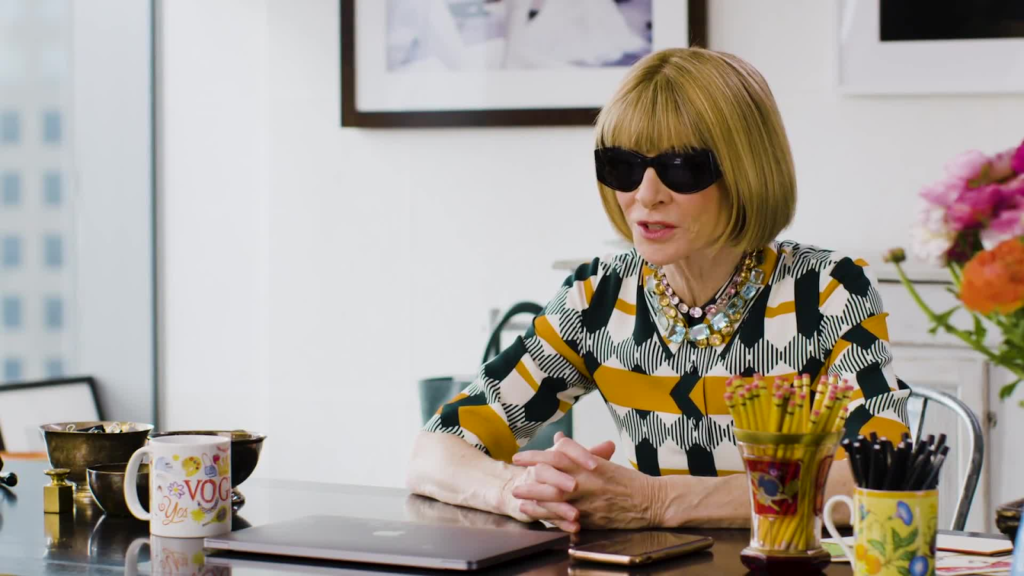
Anna Wintour is an iconic fashion figure and for sure one of the greatest editors in the history of magazines. In 1983, she was chosen by Alex Liberman, then editorial director of Condé Nast, to be the creative director of American Vogue. Her changes to the magazine were often made without then editor-in-chief Grace Mirabella’s knowledge, which caused friction between them. Also because Anna openly said to her during an interview that she wanted Mirabella’s job.
Then in 1985, Anna became editor-in-chief of British Vogue. This is what Amy Odell shared with Glam Observer in an interview about Anna Wintour’s role:
“So she gets this job at British Vogue and she probably felt like she has to turn the magazine around fast. It’s in her nature to get things done efficiently. So what did she do? She cleaned out the staff, got rid of a lot of people and completely changed the magazine. She changed the look and the fashion totally, before her it was kind of a romantic feel. It went from photos of women with horses and twigs in their hair to women in suits chasing taxis.”
“She totally changed the front of the book, cut columnists, and brought in new people. And she did that all very fast. It was just really unlike the culture of British magazines at the time. The EIC didn’t just come in from New York and totally change the staff and everything about a magazine and that’s what she did. This really kind of led to her reputation.”
Wintour’s ideal reader was the same woman Savvy, where she used to work, had tried to reach.
“There’s a new kind of woman out there”, she told the Evening Standard. “She’s interested in business and money. She doesn’t have time to shop anymore. She wants to know what and why and where and how.”
Although Anna Wintour’s dream of working at Vogue became true (or better said – she paved her way to it,) what she wanted the most was to return to American Vogue. And she did – in 1988. She changed everything in the magazine – from the staff to Vogue’s vision, to how its front covers looked like. Her first November 1988 issue featured on the cover a 19-year-old model Michaela Bercu in a $50 pair of faded jeans and a bejeweled jacket by Christian Lacroix worth $10,000. It was revolutionary because it was the first time a Vogue cover model had worn jeans.

Fun fact: when the print company saw it they thought it was the wrong image and called the magazine to check if it was correct. And their surprise is understandable. As Vogue used to feature headshots of well-known models in studios under Grace Mirabella. And on the opposite, Anna Wintour used less well-known models. She also mixed inexpensive clothes with high fashion. And that’s how began Anna Wintour’s exciting career at Vogue.
Check out this article we wrote about Anna Wintour’s career and why she is so famous.
Franca Sozanni

Franca Sozanni is, perhaps, the first name that comes to mind when thinking about the history of Vogue Italia. She was appointed Editor in Chief of Italian Vogue in 1988 (the same year as Anna Wintour) and immediately shook up the covers and editorial content, creating a magazine that, in her words, would be “extravagant, experimental, innovative.”
Sozanni is mostly credited for creating a strong visual identity for the magazine due to her collaboration with iconic photographers. Such as Bruce Weber, Paolo Roversi, and Peter Lindbergh, among others.
“Why would anyone buy Italian Vogue?” she once told Vogue, “They wouldn’t—only Italians read Italian.” She knew that she needed to communicate instead through powerful imagery. “When I sent all these photos to you, I would write on the package ‘personal,” Weber wrote to her, “I now realize that I took them for you because you would be the only one who would understand.”
Another notable thing she did for the Italian Vogue is publishing controversial topics at the time. Like the weight debate, plastic surgery, and domestic violence.
The famous editor is also credited for bringing black models to the pages of the magazine. Her July 2008“ All-black” issue featured only models of color on the cover and across all editorial. It sold out so quickly Condé Nast had to print an extra 40,000 copies.

And so, Franca Sozanni turned Italian Vogue into a powerful magazine with a reach and influence far beyond its relatively modest circulation.
Following her death in 2016, Netflix released a documentary on the late editor’s life, “Franca: Chaos and Creation”, directed by her son, Francesco Carrozzini.
Alexandra Shulman
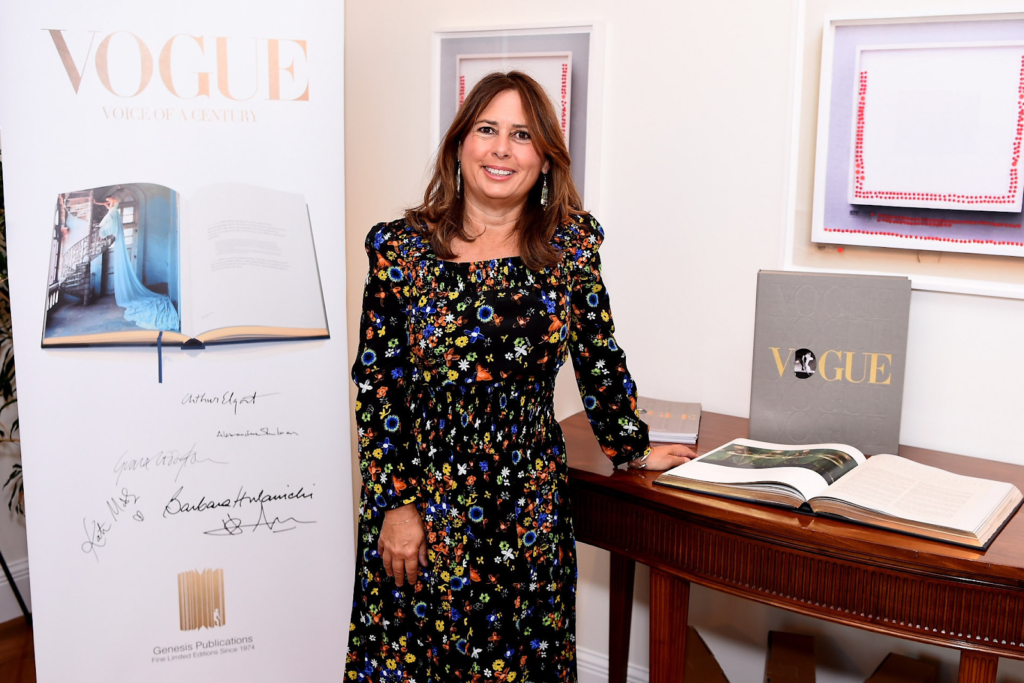
Upon her appointment as Editor-in-Chief of British Vogue in 1992, she was criticized by the press because of her lack of experience in journalism compared to her predecessors. And also because she had an “unusual” appearance. She was not a size zero and didn’t have a “fashionable” haircut.
However, Shulman’s talent was undeniable as during her 25 years of tenure at Vogue, the circulation increased 12% to 195,053. She has championed both British fashion and London fashion week. And she is credited with fostering the careers of great fashion photographers like Mario Testino and Tim Walker. She was awarded an OBE in 2005 for services to the magazine industry.
One notable moment of her career at Vogue is June 2009, when she wrote an open letter to major international fashion houses including Chanel, Dior, Prada, and Versace, complaining that their ‘minuscule’ sample sizes were forcing fashion magazines to use models with ‘jutting bones’ and ‘no breasts or hips’. Apparently, she didn’t think much difference, but it was her way of encouraging dialogue and speaking out about the issues of beauty standards. For example, she refused to publish diet tips or cosmetic surgery advice in the magazine.
However, Shulman’s own message on beauty and health was sometimes questionable and controversial. For instance, Kate Moss’ photoshoot in British Vogue 1993 issue was criticized by some for promoting unhealthy body standards.

You can learn more about Alexandra Shulman in her book Inside Vogue: My Diary Of Vogue’s 100th Year.
Edward Enninful

Edward Enninful has worked for different international editions of Vogue. By the time he was in his 20s, Edward Enninful became a contributing editor for Italian Vogue in 1998, working under the editor-in-chief Franca Sozzani with whom he was applauded for bringing Black models on the cover of the “Black Issue” of July 2008, among others.
In 2006, Enninful became a contributing editor for the US Vogue, working alongside Anna Wintour who inspired him in his career as an editor and is his close friend today.
In 2017, Edward Enninful replaced Alexandra Shulman, becoming the first black editor-in-chief of the magazine, to which he is credited for taking more “risks” and bringing more diversity by inviting influential Black women like Oprah Winfrey, Rihanna, and Naomi Campbell to appear on the British Vogue covers.
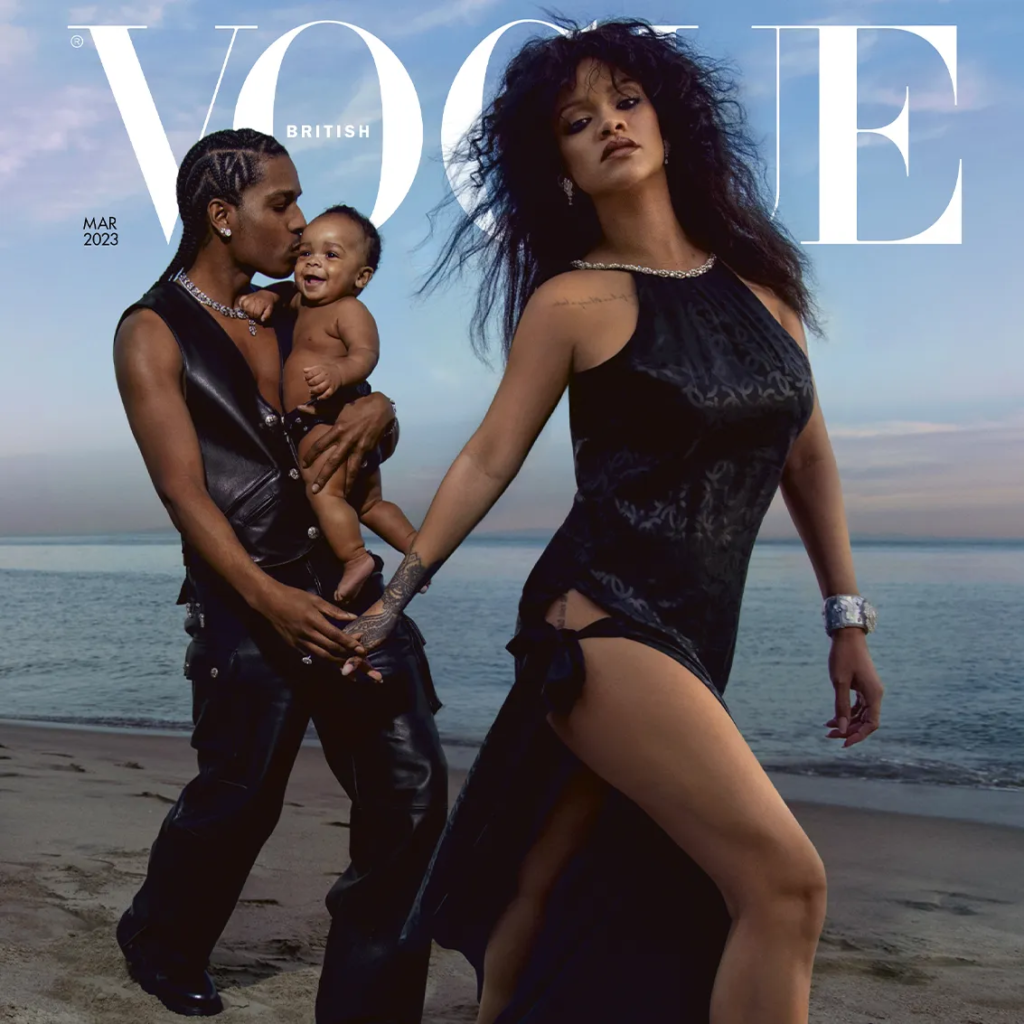
We invite you to read his autobiography A Visible Man to learn more about his trajectory in his own words.
Carine Roitfeld

Carine Roitfeld is one of the most iconic and famous editors of French Vogue of all time. She led the magazine from 2001 to 2011.
Roitfeld changed the name from French Vogue to Vogue Paris (now called “Vogue France”) and is mostly known for publishing beautiful yet often contradictory editorials that frequently showed nudity and smoking.
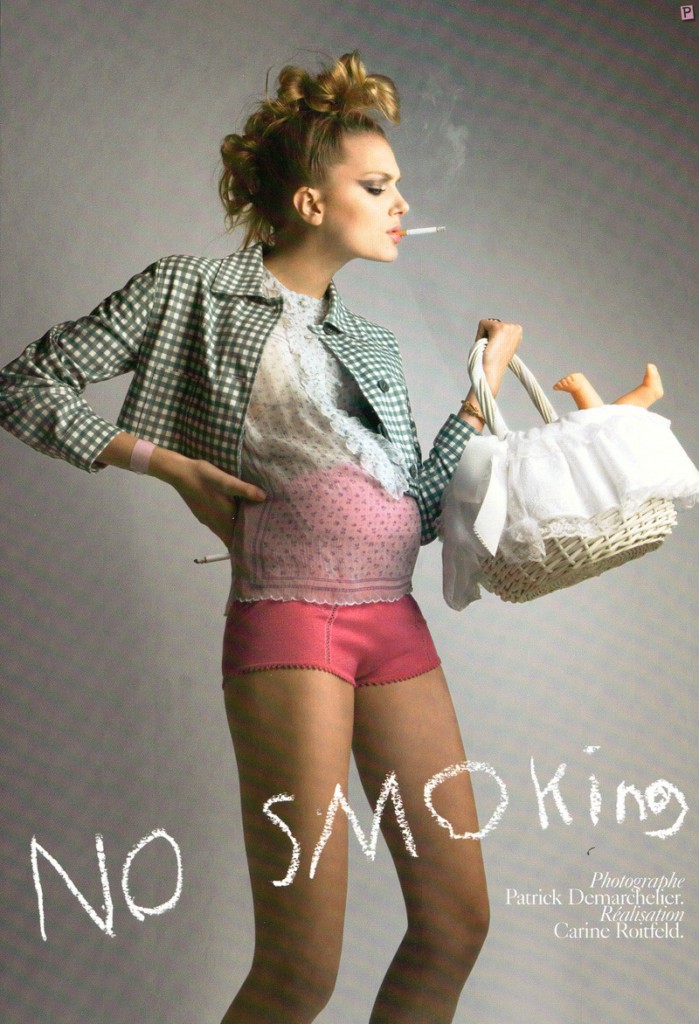
This is what Carine Roitfeld shared with French Vogue about the choices she made at the magazine.
“Maybe the biggest risk I have taken is to open the gate. I was the first one to put a transgender model on a cover of French Vogue—he is black with a beard and I put him in a mini coat because he had beautiful legs. Everything was against me in a way, but I used it; it was fantastic with an edge, you know. I was the first to use a girl with a Muslim scarf; curvy girls. . . . I dedicated an entire issue to Liya Kebede.
At that time, it was the first time that someone dedicated an entire issue to a black girl. People said, “Don’t do it; it’s not going to sell.” And I said, “Why? She’s beautiful? What’s the difference? She’s just beautiful for me; I want her and not anyone else.” And the issue sold very well. Maybe I was one of the first because I’m always fearless regarding beauty. I feel beauty everywhere. I don’t have a code of beauty. And I don’t listen to other people; people are afraid. I’m not afraid. I respect people, but I’m not afraid of what could happen. You never know why you’re going to be attacked, never, so you have to trust yourself and respect people.”
You can watch the “Mademoiselle C” documentary from 2013 to learn more about her life and career.
We hope you learned something new today about some of the most famous editors of Vogue.
Maybe they inspired you to working at Vogue yourself? If so, check out our article on how to become a Vogue intern, and the one about about how to write for Vogue.
If you dream of writing for fashion magazines, register for my online course The Fashion Writer Accelerator here and I’ll teach you how to start your writing career quickly even if you didn’t study journalism and have none or little experience as a writer 😉



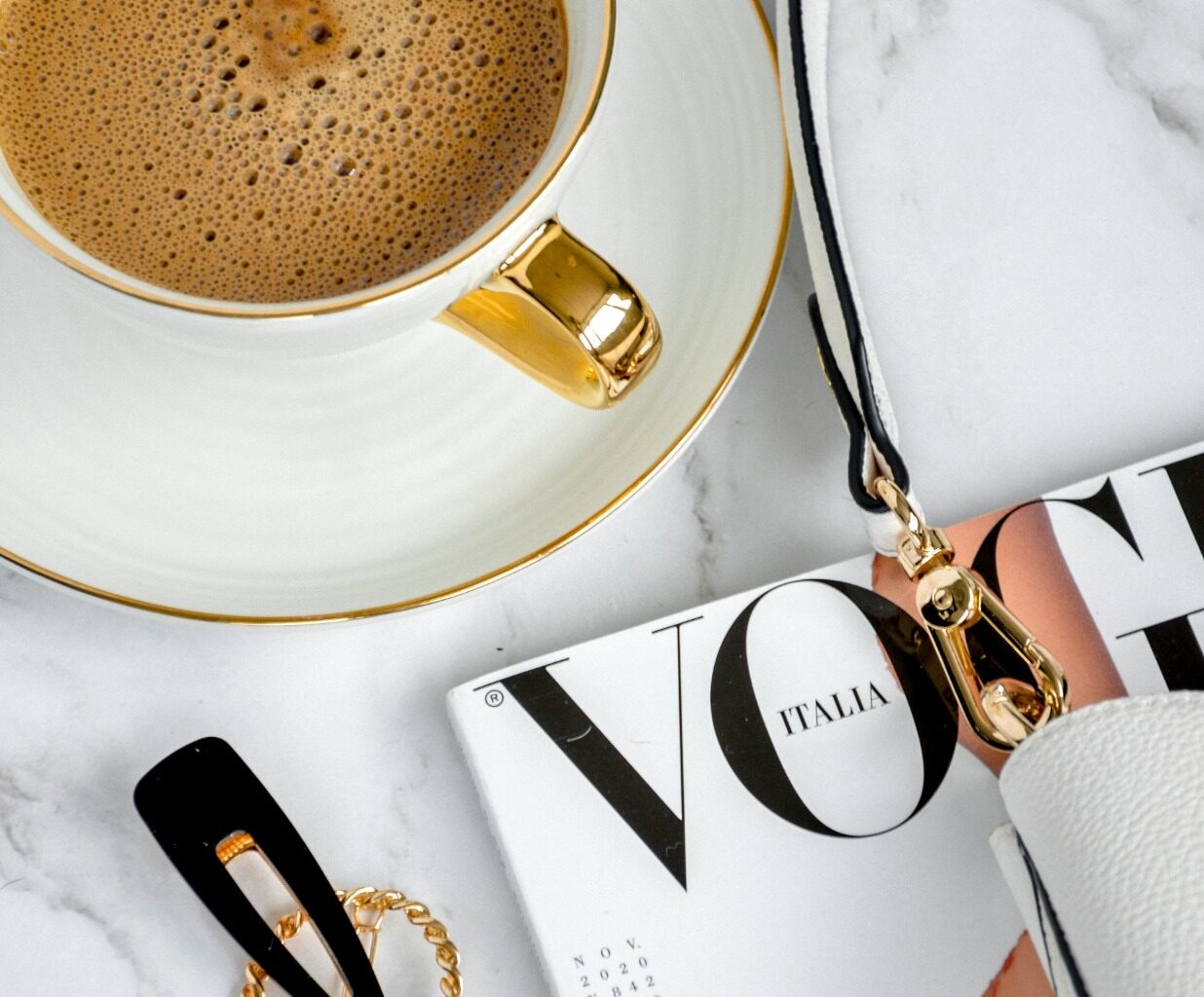

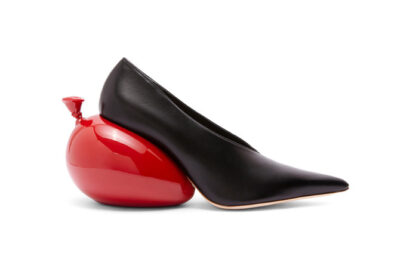
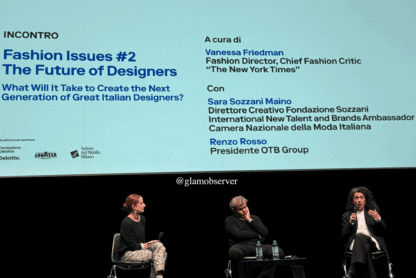
Thank you. Very interesting.